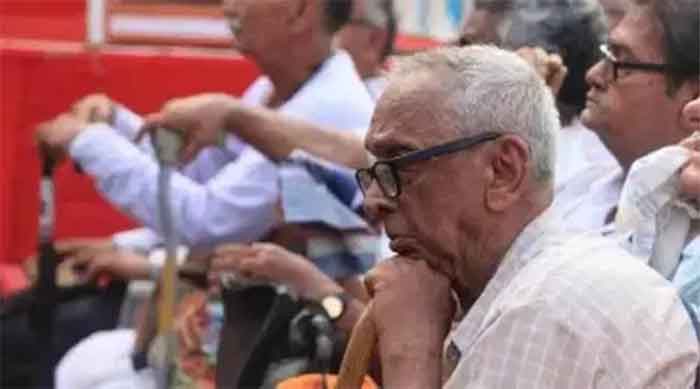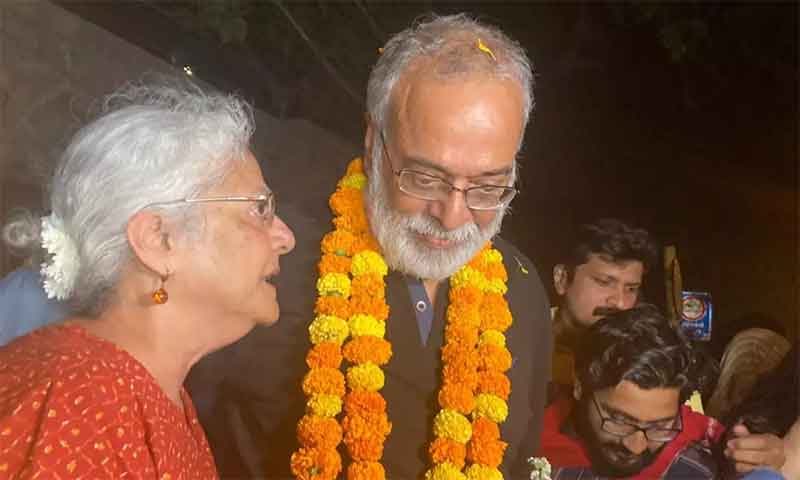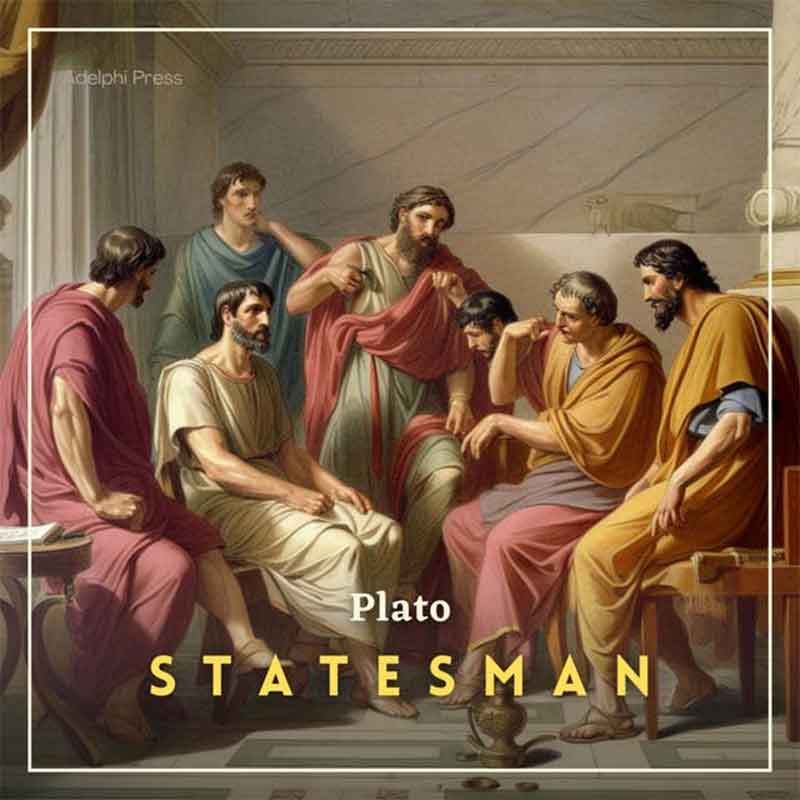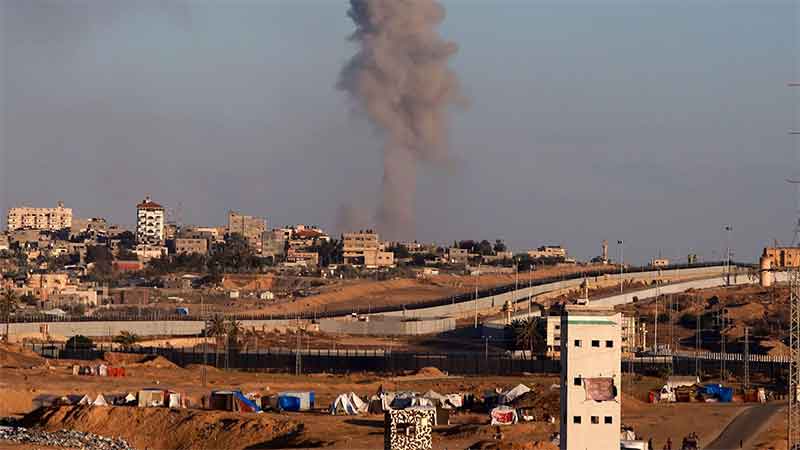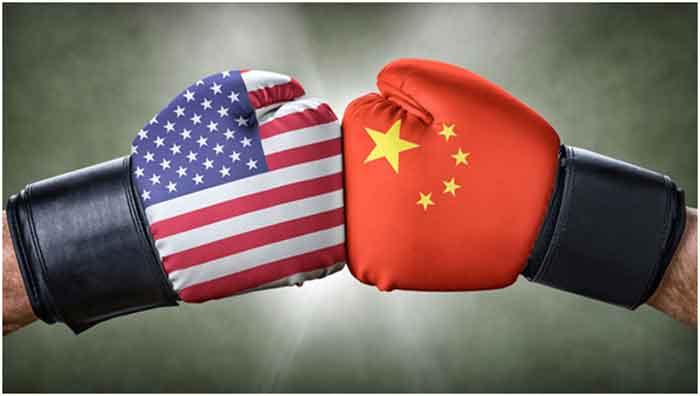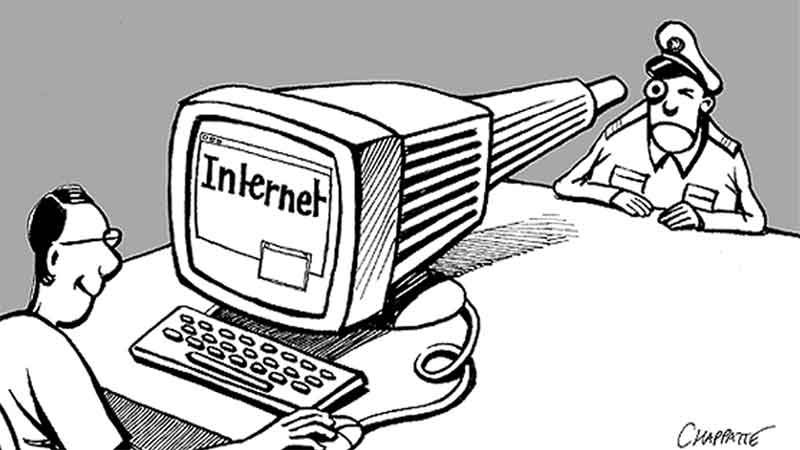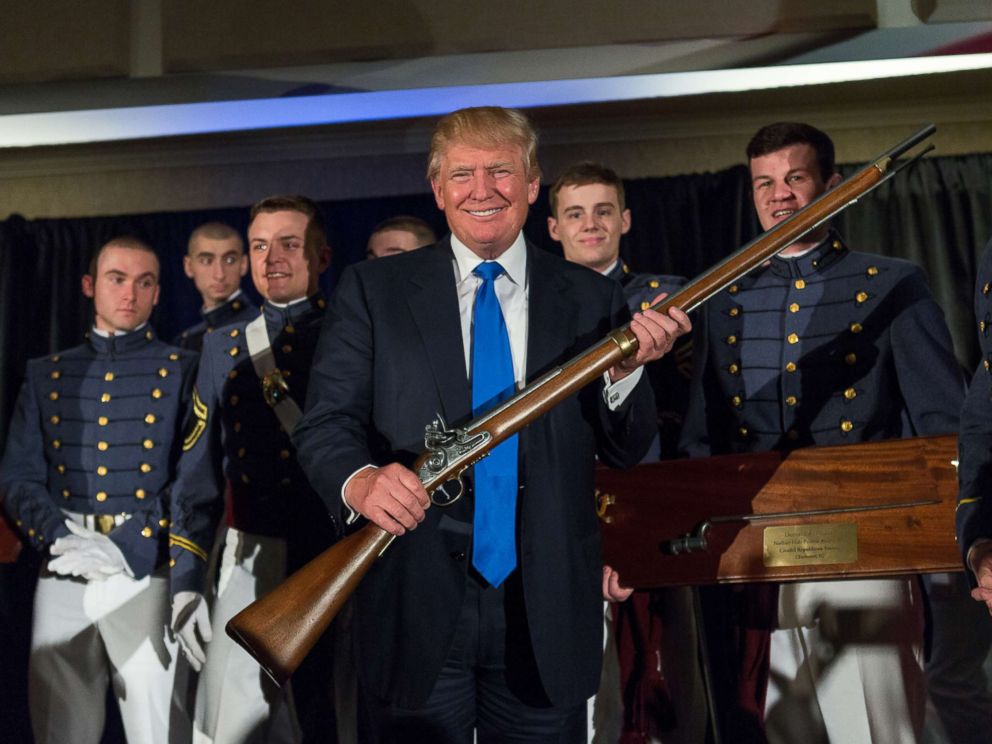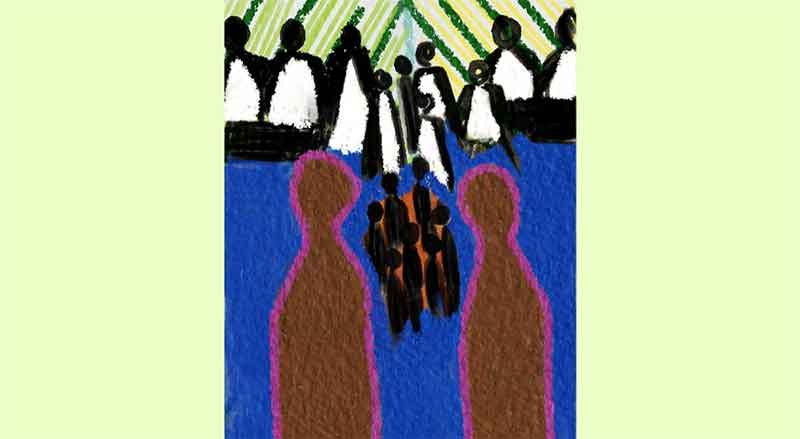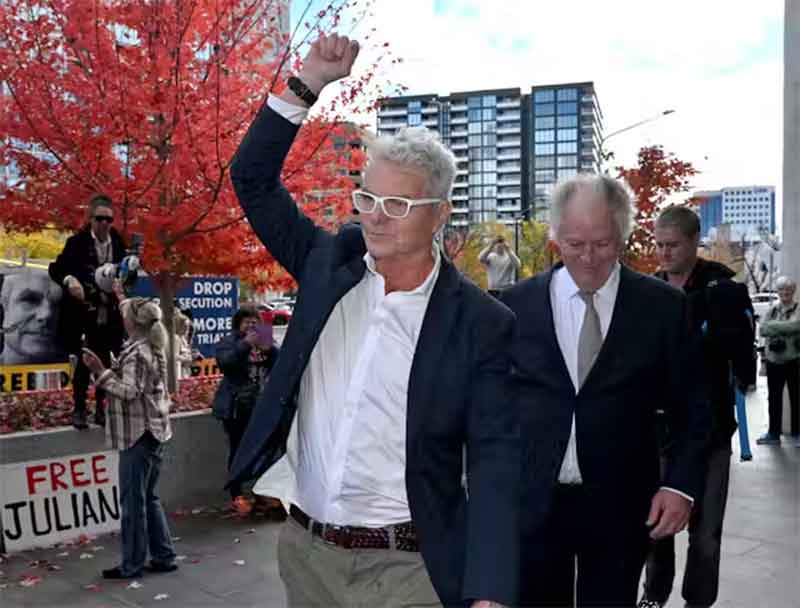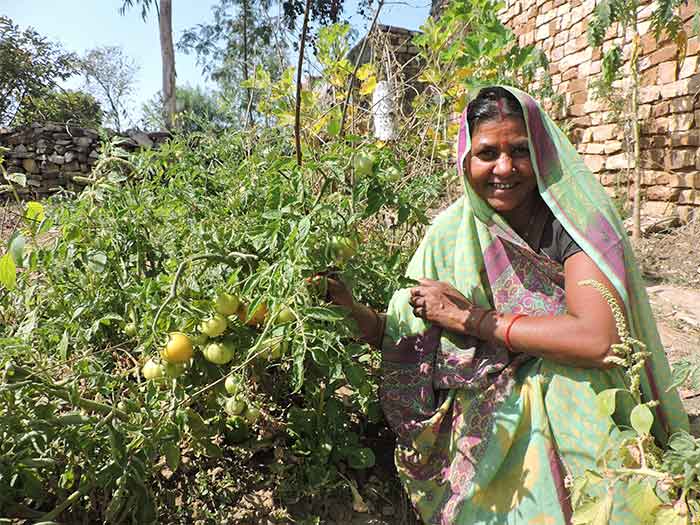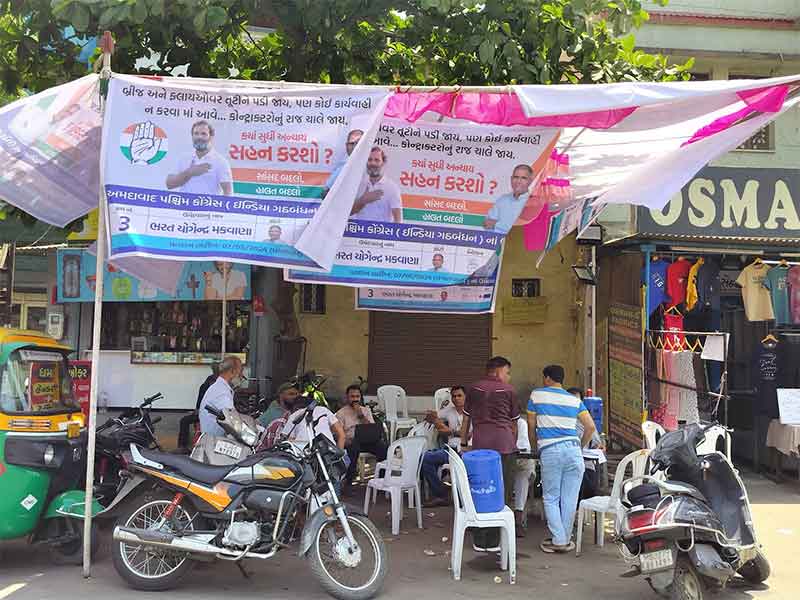
Ram Puniyani is President of Center for Study of Society and Secularism, Mumbai. Is associated with various secular initiatives and has been part of various investigation reports on violation of human rights of minorities. He has been conducting workshops and delivering lectures in different parts of the country on the themes related to threats to democracy; the agenda of communal politics; myths about minorities and politics of terror and Path to Peace and Justice.
Books: Caste and Communalism (Olive), Indian Nationalism versus Hindu Nationalism (Pharos), Communalism Explained, Religious Nationalism, Social Perceptions and Violence, Religion, Politics and women’s Equality, Bursting Myths Against Minorities (Media House)
Awards: India Gandhi National Integration award (2006), National Communal Harmony Award (2007), Mukundan C. Menon Award (2015).
Weekly column on issues related to secular values and defense of human rights, Youtube: Dr Ram Puniyani, Facebook page Ram Puniyani, Website www.rampuniyani.com . In a long conversation with Abhish K. Bose he discusses the changes happened in hindu religion and the changing nature of communalism in the country over the past years.
Excerpts from the interview
Abhish K. Bose : It is said that India is a country built on the foundations of a civilisation- that is fundamentally non – religious. But ever since a series of incidents beginning from the Ramjanmabhumi mobilization, the demolition of the Babri Mazjid, the Gujarat riots to the violence in various parts of the country after BJP ascending to power in 2014, is there a conspicuous change in the character of the Hindu religion which is being practiced. Has the Sangh parivar designs to alter the pluralistic edifice of Hindu religion to a violent aggressive religion materialized? What is your assessment?
**
Ram Puniyani : Indian culture is plural with multiple diverse traditions living side by side with peace and amity. This was seen by the rising National movement as ‘Unity in Diversity’ on one hand and ‘Ganga Jamuni tehjeeb’ (mixed or syncretic culture, named after the two major rivers of north India, which merge) on the other. The tallest leaders of freedom movement saw it this way. Gandhi in ‘Hind Swaraj’ (Gandhi’s major book) and Nehru in ‘Discovery of India’ highlight and underline this fact. Nehru sees is as multiple cultures coming one after the other as different layers and mingling and coexisting with the other layers with full openness. These leaders of National movement saw the whole of culture and not just religion as the defining point of their understanding of society.
In contrast to the leaders of freedom movement for whom culture was inclusive, the communal streams were exclusive in their outlook and harped on their culture based exclusively on the narrow interpretation of their religions.
Hinduism practiced was open and liberal for the most people. This was reflected best in the Bhakti tradition where moral values reign supreme and those belonging to other religion are not looked down upon. This was best presented by the leader of freedom movement, Father of Indian nation, Mahatma Gandhi, who saw Ishwar (Hindu God) and Allah (Muslim God) as being the same. He regarded all religions, Islam; Zoroastrianism, Christianity etc. as belonging to this land. For him morality of religions was supreme. In contrast the Hindu communal stream harped on the upper caste; Varna based Hinduism, presented the period of Brahmanical domination as the glorious period of our past and saw Islam and Christianity as foreign religions.
Their presentation of Hinduism was Brahmanical and harped mainly on identity issues like Temple, Holy Scriptures, and caste and gender hierarchy to be the mainstay of Hindu religion. This was reflected in the recent awarding of Gita press with Gandhi award. Gita press represents the type of Hinduism which the present ruling dispensation wants to promote. Gita press publications have constantly opposed temple entry for dalits, has opposed women working outside home, supported dowry and wife beating.Gandhi made non-violence as the central part of practice of religion. Sangh Parivar (RSS Combine) has been promoting violence in various ways. Those indulging in violence against religious minorities are generally let off and enjoy impunity. This impunity being enjoyed by them further encourages such violence, against not only religious minorities but also against dalits (Downtrodden, marginalized caste), Adivasis (Tribal) and against women. Barring some exceptions those indulging in communal violence are not punished or let of lightly like Maya Kodnani and Babu Bajarangi. In case of Bilkis Bano those punished for deaths and rapes were treated with kids gloves and then prematurely released. They were honored with garlands and sweets. This is all is being done in the name of Hinduism.
Abhish K. Bose : Scholars categorized the communalism that exploded in India in the 1980s and 1990s and later period as a new kind of communalism which is starklydifferent from that of the previous period, that is before 1980s and even that of the pre independence period. The later period also claimed many lives and damages as well as helped BJP to capture power in India. Could you compare the nature and texture of the two kinds of communalisms prevalent at the two separate periods to throw light on the majoritarian Hindu communalism flourishing currently in the country?
**
Ram Puniyani : Communalism in India rose to oppose the secular democratic national movement, which had elements of Liberty, Equality and Fraternity. In contrast communalism had roots in the pre-modern ruling classes of landlords and Princes-Kings of yore. They were totally opposed to the embryo of values of modern democratic norms, which were the foundation of rising Indian Nationalism. The communal forces, Hindu and Muslim initially were together and later with British policy of ‘divide and rule’ the Muslim and Hindu communal streams separated and emerged, as parallel and opposite to each other. During this period they took up issues related to music in front of mosque, beef in temples, pork in mosque, dishonoring of the women of ‘other’ community, cow-beef and religious conversions like Shuddhi (Converting low caste who embraced Islam back into Hinduism and Tanzim (Converting to Dalits into Islam) and inter religious
marriage etc.
The violence which was triggered was equal from both the communal streams and in dealing with the perpetrators of violence the British colonialists did not take sides. This did start polarization in the society along communal lines. The communal propaganda from both sides was intense and a section of upper middle sections of society, in particular, came under the influence of this communal stream.
Post Independence, the nature of communalism changed. Now Hindu communalism became the majoritarian one. Jawaharlal Nehru did point out that both communalisms are a danger to democracy. While Majoritarian communalism presents itself as Nationalism, the minority communalism comes up as separatism. In the aftermath of partition Muslim community started wrongly being blamed for partition and violence was orchestrated against them on the pretext of rape of Hindu girls (Jabalpur 1961) to begin with. Many a trade rivalries also took the form of communal violence in places like Meerut, Malayan among others. The significant change during this period was the partisan attitude of police and state, the political leadership and other state officials. They were favoring Hindu communal forces. The major victims of violence Muslims and those who were arrested for this were also primarily Muslims.After 1980s the communalism assumed more menacing form; taking recourse to personal laws and using history as a tool for spreading Hate and thereby was able to orchestrate violence. Babri Mosque issue was the major issue opening the Pandora’s Box of history and the communal historiography ruled the roost associating today’s Muslims with atrocities of some Muslim kings. This worked well for the majoritiarian communal stream and polarization of communities along religious lines and ghettotisation of Muslim community due to insecurity became a major factor of social-political life.Adding to the historical abuse for communal goals came up issue of love jihad and Cow-beef in particular. Today Hindu majoritarian politics is riding on the wave of these issues and getting strengthened by adding more misconceptions against Muslim and also Christian minority.
Abhish K. Bose : You have conducted extensive field studies in northern India especially at the riot-torn places at the time and after the Ramjanmabhumi mobilization. What is your current assessment over the communal situation in those places where you held field visits? What is the status of communal amity in these places? It is said that wounds of communal riots will remain unhealed for many years and will flare up with slight provocations?
**
Ram Puniyani : The places which have witnessed communal violence have become very polarized and the physical and emotional walls have been erected between religious communities. While the majority community harbors the misconceptions of hate against the minority community, the minority community’s primary sentiment is that of fear and insecurity. The joint celebrations, at social and religious level have come to a total halt. The core value of a Nation, fraternity has suffered a severe jolt.The wounds of communal violence have mostly remained unhealed. The major obstacles to this had been the failure on the part of the state to give justice and rehabilitate the victims of violence. The places which have suffered the violence may not see the repetition of violence in immediate future as the polarization in these places is close to complete and communal forces behind the violence do not achieve much by repeating this in the same place, by and large. Yes but in the country overall the provocations needed to flare up the violence are many and easy to instigate. The Hate against minorities is the dominant feature of present political discourse.
Abhish K. Bose : Scholars have maintained that the Gujarat riots killings represented a distinctively new cultural moment in the long history of Indian communal violence similar to that of the Sikh massacres of the 1984 in which people were similarly targeted. Can you discuss the theoretical and evidentiary basis for the aptness of such a classification? Are the Gujarat massacres an ‘ elite conspiracy’ or bottom – up ‘ mass movement’ of the hindutva, or a combination of both?
**
Ram Puniyani : First of all I will like to point out that anti Sikh pogrom of 1984 and Gujarat Carnage and other acts of anti-Muslim violence are not comparable. The violence against the religious minorities can be broadly categorized into two groups. One is the anti-Sikh violence, which was one go event and came up as a sort of insane political revenge against the hapless Sikh community. The other is a regular repetitive violence against Muslims and Christians, which is part of the Hindu Nationalist agenda.What they share in common is the mechanism of violence against the innocents. The violence appears to be spontaneous, but there seems to be a planning behind it. Those in leadership generally get it organized in such a way that it appears to be spontaneous, ‘bottom up’. This bottom up is incited by the ground already prepared due to the Hate spread against the minority communities. In case of Anti Sikh pogrom it was a single go event, orchestrated as revenge against the killing of Indira Gandhi, which in turn was due to Operation Blue star, prompted by the occupation of Golden Temple by Khalistani elements. The Gujarat carnage was orchestrated on the pretext of Godhra train burning. The list of Muslim households and shops were ready; handy and people were incited by taking the burnt bodies in a procession from Godhra against the advice of the local Collector of the city; Jayanti Ravi.The violence began with blame on minority community that ‘they’ burnt the train, locals particularly subalterns were roped in to take ‘revenge’. The anti Muslim violence is regular and repetitive; it’s a part of Hindu nationalist agenda aims at polarizing the communities and to reap the electoral dividends. To me the violence is organized by inciting the ‘bottom’ and by letting participants know that they will enjoy impunity. While mechanism of violence creation is similar the underlying politics is very different in both.
–
Abhish K. Bose : How did the hindutva populism blurred the gap between caste and religion in the Indian society thereby the caste populism got vanished and hindutva nationalism emerged?
**
Ram Puniyani : As such the central goal of Hindutva populism is to maintain the caste-Varna hierarchy while presenting Hindu unity. It has done so by showing the fear of the ‘external enemy’, Muslims and Christians. In the context of rising consciousness among dalits for equality, in the backdrop of movement for dalit dignity and the Constitutional provisions for equality and space for reservation and affirmative action, Hindu populism went all out to win over the lower caste at social and political level without approving the reservations, without challenging the caste-Varna hierarchy. It floated ‘Samajik Samrasta Manch’ (Social Harmony Forum) and did a massive ground work to win over dalits through Seva (service) on one hand and by symbolically upholding dalit icons without taking up their principles.
Hindu nationalists have also picked up historical icons, presented them as dalit Heroes and given an anti-Muslim slant to their narrative. Suhel dev is an example of this, Pasi and Bhar communities uphold him as there icon. Yet again the process of Sanskritization is unleashed where by upper caste dine with the dalits and this sounds like gives a sort giving respectability to them. Yet again there is a process of cooption of Dalit leadership in Hindutva fold like Ramvilas Paswan and Ramdas Athawale, who for the crumbs of power stick to Hindu nationalist cabal. To cap it all the massive network of RSS shakhas, (Branches, local units) which have doubled up during last decade, are able to spread a massive outreach to these sections and through regular, religious-cultural programs and have construct a base for Hindu nationalism.
Abhish K. Bose : what is the rationale that binds a large majority of the lower caste population behind the Hindu nationalism project and BJP, when the fact is that neither the predominant section of the Hindus that is the Dalits or the OBCs enjoys the status of the Hindu community members and were historically relegated as outcastes? Only the Brahmins which are a minority are given the status of Hindus. When this exists as a raw fact how the Dalits and OBCs rally behind the BJP thereby helping to electorally success? Will there be the emergence of a political configuration which separates them from BJP and stand as an entity of their own?
**
Ram Puniyani : BJP is the electoral wing of Hindu nationalist politics. Its parent organization has floated many organizations to work among dalits and Adivasis. Through its vast network of Shakhas RSS has trained large number of pracharaks (propagators) and swayamsevaks (Volunteers) who work on the ground level, at community level among these sections of society. They first begin with religious machinations, promoting Hindu religious festivals among these sections. During seventies and eighties their volunteers promoted Vinayaka ( Lord Ganesh) festivals in dalits localities. They used to initiate the process, support with the funds and involve the dalit communities and introduce Brahmanical norms among them. In Adivasi areas they organized Shabri Sangams. Shabari is an Adivasi character in Ramayan who offered berries to Lord Ram, after tasting individual berries. She is a symbol of poverty and destitution. RSS combine has made her temples and promoted her as their goddess. This is a cultural messaging also, as to who is the idol of Tribal. Also they started making Lord Hanuman as their deity and initiated multiple campaigns to polarize him in Adivasi areas, this again is a sort of messaging, loyalty to Lord Ram, who has been projected as icon by Hindu nationalist forces. This helped in co-opting these sections at religious level towards the RSS version of Hinduism.
At social level they constantly interacted with these communities, giving them a feeling of respect. Their constant interaction gave the impression to these communities of being honored, and consequently being won over at electoral level despite the BJP opposing the reservations, diluting reservation through introduction of reservations based on economic basis, avoiding caste census among others. It is pure ground level community interactions, undertaken at massive scale, which have prepared the ground for BJP making gains amongst these sections of society at electoral level. With this and the policies (Anti dalit) which led to institutional murder of Rohith Vemula, banning of Periyar study Circle in IIT Madras, a section of dalit youth are becoming clearer about the deeper agenda of BJP-RSS. There are many dalit groups, who are trying to come together to oppose the deeper caste discrimination by BJP. Many a youth leaders are articulating dalit aspirations as separate groups or through other parties. For example youth leaders like Jignesh Mevani and Chandrashekhar Ravan, stands as a good example of that. Similarly many non dalit youth and organizations are trying to incorporate the dalit-Adivasi issues in the mainstream political discourse. Kanhaiya Kumar is one such example who is trying to take up caste issue along with class issues. True, dalit movement is fragmented but the awareness to include these in the mainstream discourse, away from the caste discriminatory politics of BJP is surely in the air.
Abhish K. Bose : According to a certain point of view ‘ the deepening of democracy’ happened in India after the 1980s. The emergence of BJP as a major force in the country also happened in the same period. How do you perceive the deepening of democracy in India and simultaneous emergence of BJP in India? Is it that BJPs emergence as a primal force deepened democracy in India?
**
Ram Puniyani : It is true that democratic process has been deepening in the country. This process gives articulation to subaltern sections of society as well. With deepening democracy and coming up of dalits and women in the social space a section of society, which felt threatened due to the coming to fore of downtrodden, resorted to communal politics. In the decades of 1980s, this manifested first as anti reservation riots in Gujarat in 1980s, then anti OBC promotion policy in 1985 and later after the implementation of Mandal Commission which gave boost to OBC aspirations. In reaction to this a section of society, already in privileged position in society rallied behind BJP, the politics of communalism, to strengthen its electoral power to be able to oppose the deeper changes in society.BJP-RSS stand for the values of pre-Modern, pre Industrial caste and gender hierarchy and by decade of 1980s the social transformation towards equality started showing up in rudimentary form. It was this which gave a fillip to the already existing BJP mechanism, which brought it to the fore. It is not a primal force in deepening of democracy of India. As a matter fact, it has taken advantage of the process of deepening democracy to make inroads for an agenda which cuts the very roots of democracy as such.
—
Abhish K. Bose : certain scholars are of the view that the Modi era in the Indian politics will not last long and are pointing towards the emergence of a new political configuration based on hindutva other than BJP on the anvil. How realistic are such expectations in your understanding?
**
Ram Puniyani : The Modi period of Indian politics has wrought havoc on the plight of average people of society. The rising unemployment, the increasing prices, the worsening poverty, increasing rich poor divide and social polarization has made the large sections of people aware about the negative impact of continuing BJP rule. The declining press freedom, worsening indices of democracy and freedom of religion has raised a severe alarm among most sections of society. The BJP government is insensitive to peoples plight as demonstrated in its response to farmers movement (In which nearly 650 people lost their lives), to the effort to disenfranchise Muslim through NRC, CAA leading to Shaheen Baugh movement and then orchestration of Delhi violence, and lastly ignoring the wrestlers complaint against sexual harassment. The use of ED, CBI, IT against the opposition leaders have made them aware of the dangers of the Modi dispensation.
In addition Rahul Gandhi’s Bharat Jodo Yatra and result of Karnataka elections (2023) has brought massive change in the political horizon. Now opposition political parties more than before feel the need to come together and form a political electoral front for democracy and secularism. There are lots of obstacles in its path but as the matters are developing there is a good possibility that the united opposition by fielding a single candidate against BJP candidates in the elections may succeed in coming to power.This seems easier said than done as BJP is vastly equipped with thousands of RSS pracharaks, lakhs of swayamsevaks, many RSS affiliate organizations who work for BJP success in elections. BJP has media on its side aided by IT cell and social media network carrying its message. It is also the richest political party in the country. It may play some tricks yet again to polarize the society apart from the already floated Uniform Civil Code and the issue of National security.
—
Abhish K. Bose : It is said that the electoral fixation towards the BJP can be sizeably stemmed by educating a large segment of the Indian society. Do you think if a sizeable chunk of the electorate in rural and urban areas are educated they will jettison from voting for the BJP. How prudent is this perception?
**
Ram Puniyani : No doubt education has immense role in electoral awareness. It was also joked that BJP is not able to make inroads into Kerala as that state is very literate. But that apart; mere formal education is no counter to the BJP politics. The RSS and its vast network of Shakahs, the Sarswati Mandir chain of schools, Ekal Vidyalayas all run by this organization popularize its version of history, culture and politics which makes strong case for BJP’s success. This is aided by Godi media, BJP’s it cell, and large number of print media which spreads the BJP version of politics. This is what Noam Chomsky called “manufacturing Consent”. In Indian scenario ‘social common sense’ among large sections of society is constructed on communal lines; the religious minorities are demonized by using History. The medieval period of history is used to demonize the Muslim community by propagating that Muslim Kings destroyed Hindu temples, Islam spread by force, and Muslim kings were cruel to Hindu subjects. The demographic issues related to increase of Muslim population is attribute to religion in popular parlance and threat of Muslims becoming a majority in the country; is used to polarize section of Hindus. Similarly Christians are presented as doing conversion work through force, fraud and allurement. Though all these are totally false these are becoming part of social common sense. We need to popular works to combat these misconceptions, which in turn lead to hate, violence, polarization and victory of BJP in elections. Mere formal education will not counter the politics of BJP.
–
Abhish K. Bose : What do you think of the rise of religious nationalism worldwide? Do you consider it essential to modify the concept of religious nationalism and/or construct new concepts to address the increasingly technologically driven character of political change?
**
Ram Puniyani : There are multiple factors due to which religious nationalism has grown worldvide, particularly from the decade of late nineties. In the post colonial states, the absence of total secularization process had been the seed. The landlordism and associated clergy continued to thrive with their values, which are based on birth based hierarchies, hiding themselves behind the cloak of religion. In South Asia India was the best placed, but Pakistan, Sri Lanka in particular adopted a path where religious nationalism was dominant.
In West Asian countries, it was the imperialist greed for oil, which proactively promoted the fundamentalist elements and led to the right ward shift all through. Its seeds can be discerned from the 1953 CIA overthrowing Mosaddegh Government in Iran. Mosaddegh, the democratically elected Leader was overthrown as he was out to nationalize the oil wells. The installing of Raza shah Pahlavi in due course paved the way of coming to power of Ayatollah Khomeini.
US had also proactively promoted the right wing Muslim groups in West Asia. The Russian occupation of Afghanistan brought the matters to the fore with US funding the training of Taliban, Al Qaeda which brought in havoc in the name of religion. It was this major factor which led to the global Islamophobia, the putting forward of the theories like, ‘Clash of Civilization’ and the right wing groups becoming stronger. This is how we can understand the rightward shift in the politics of the region, Religious nationalism becoming dominant in the last few decades.
While the incomplete transformation to the norms of the democratic society due to the impact of colonialism had already been prevalent in some countries; the proactive training of Taliban brought the process of global rightward shift to the fore. Capping it all; there were multiple invasions in the region by US, attacks on Afghanistan and Iraq being the major ones. These in turn provided the fertile ground for rise of fundamentalist tendencies in the region.On the top of it, the plight of poor in the ex-colonies, of Africa in particular, trying to migrate to the countries which had colonized them created an adverse atmosphere. These poor from the ex-colonies in the slums and poor localities of France etc. gave a further boost to the right wing parties in those countries, Identity of religion seems to be stalking the World.
The US media coining and propagating the word “Islamic terrorism’ has been the underlying statement all through. We see the combination of incomplete secularization process in colonies, aided by the Imperialist lust for oil control as the two central phenomenons aiding the Fundamentalism during lastthree decades.
The religious nationalism is a mammoth setback to progress of human society towards equality. The issues of people, the social movements through democratic means and upholding of substantive democracy is the key to combat this retrograde phenomenon. The Information technology revolution has helped us to see the process in a more transparent manner. Social movements imbibing this technology as its mechanism of expression will be very crucial to combating the religious nationalism.
Abhish K. Bose : The Sangh parivar has established a rapport with the most under privileged people of the country regardless of the rural urban divide. The Sangh has extended its roots among the Dalits, tribal’s and the financially deprived segments of the society and also the elites. Is this because of the absence of effective interventions from the secular forces to the plight of those segments which helped the Sangh to exert their influence over them?
**
Ram Puniyani : As pointed out above Sangh has most effectively reached to communities on the basis of ‘service’ (Seva) and social engineering, co-opting them in the grip of their agenda. Their propaganda mechanism has gripped large sections of society. Secular forces, particularly after Nehru era, failed to reach the message of democratic values far and wide. The network to reach to communities with the message of Liberty, Equality, and Fraternity remained more on paper than becoming a part of societal consciousness. The left forces, focused on rights of workers and peasants without reaching to them the underlying principles and values which oppose the social inequalities in the name of religion. The caste system and struggles for opposing impact of caste on the dalits remained an issue only for fragmented dalit groups. The class and caste struggle were not standing on the same platform. These energies which could have become a formidable force to transform the society towards democratic values remained fragmented. The religious nationalists, and those upper caste that benefit from the status quo of religious nationalism, were powerfully mobilized under the umbrella of Sangh. The secular forces, did neglect to reach the communities at grass roots with a positive message. Their fragmentation has been a major weakening factor in rise of Sangh and Hindu nationalist politics. The secular forces could not match the ‘status quoist’ message of Sangh which was couched in language of religion. Also social messaging by progressive groups remained a minor part of their work leading the Sangh creating a ‘social common sense’ in which hatred for minorities helped it to mobilize the large numbers around emotive identity issues.
–
Abhish K. Bose : Are the Muslim community in India are looking forward for a large scale migration in view of the adverse political climate prevailing in the country?
**
Ram Puniyani : Large scale migration for Muslim community is out of question in India, seeing the massive number of this section of society. Their quest to have peace and harmony remains a deep longing. It is only a small section of middle class and more affluent one’s who can afford such migrations. Giving the situation of employment World over, large scale migrations are impossible but surely many of Muslims who can afford and get the opportunity will like to migrate.
A journalist with fifteen of years of experience Abhish K Bose was a staffer at The Times of India and The Deccan Chronicle – Asian Age. As a contributor, his interviews and articles have been published in Frontline magazine, The Wire, The Print, The Telegraph, The Federal, The News Minute, Scroll, The Kochi Post and the Asian Lite international published out of Manchester.



